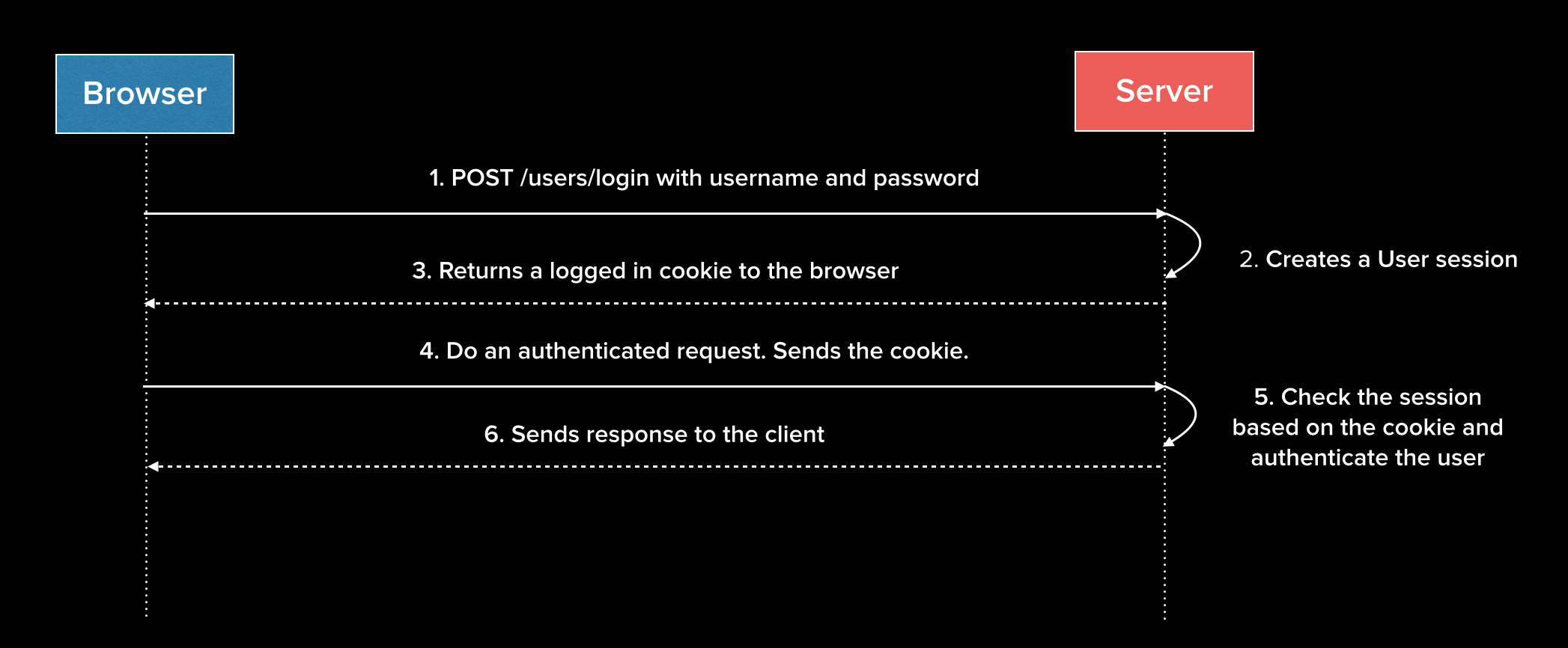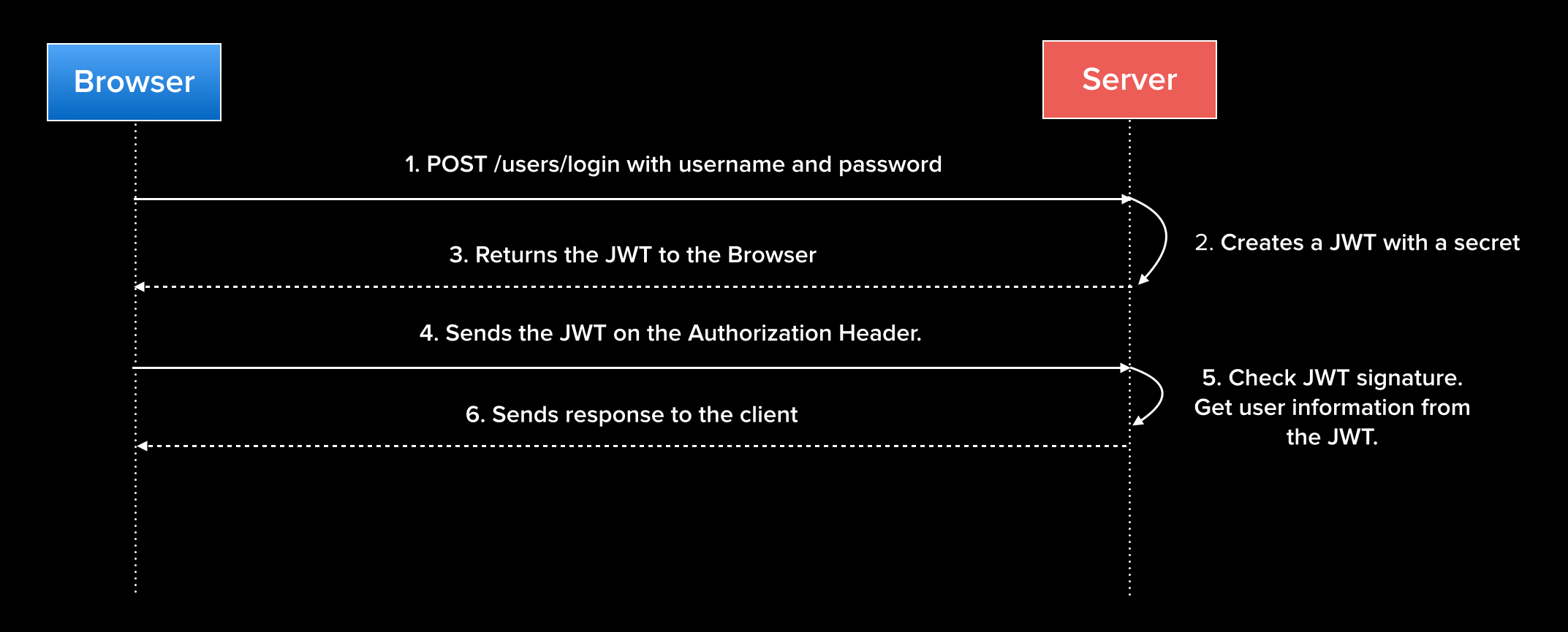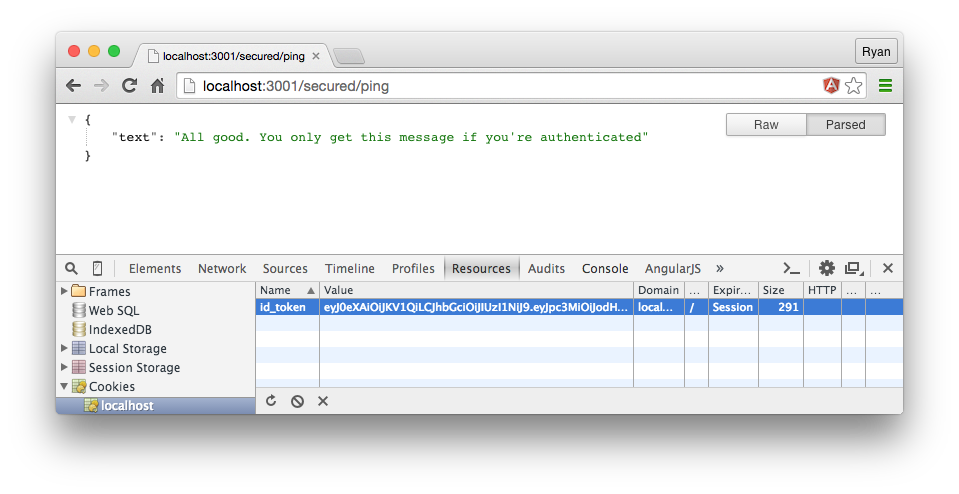TL;DR: Traditional session-based authentication with cookies presents difficulties, especially for modern web applications. We can instead use JSON Web Tokens (JWT), which make our apps stateless. Migrating a legacy app over to JWT authentication can be done piece by piece, and if we need to, we can use cookies to handle JWTs. To see how this is done, take a look at the repo for this tutorial.
--- Authentication for web applications has historically been fairly straightforward and followed a common pattern, but this has been changing significantly in recent years. There are several reasons for these changes, and the prominent ones are related to the way in which modern applications are built and distributed. In this article, we'll see how things have changed and also some ways we can adapt legacy applications to modern day practices.
Traditional Web Applications
In a general sense, traditional websites and applications typically implement user authentication using sessions and cookies. When users log in to a site, their username and password are matched against database entries. If the login is successful, the server saves the user's authentication state in memory and sends a cookie back in the response that contains some data, which in most cases includes the user's ID. Browsers will save the cookie for the domain from which it came and then automatically send it back when subsequent requests are made. For example, if a cookie is saved with a domain of auth0.com, it will be sent back on any future request to auth0.com as long as it is valid. This works great for traditional web apps.
Even though we've labeled the process described above as being "traditional", it should be noted that most of the web still operates this way. While this approach is still perfectly valid for a lot of use cases, we're going to explore some of the reasons why relying on it has become challenging for modern web applications.
Authentication Challenges for Modern Web Apps
Modern web applications present a few challenges for authentication that are difficult to solve using conventional methods. The reasons for this have to do with how applications are crafted and the environment in which applications reside.
1. Apps are distributed across many servers
Many of today's applications aren't deployed the same way they were in the past. It is now very common--and often necessary--for apps to be distributed across many servers so that up-time is increased and latency issues are mitigated. With this comes the side effect that, when a user accesses an application, it is no longer guaranteed that they are always accessing the same server.
Since traditional authentication relies on the server to keep the user's authentication state in memory, things break down when the app is accessed from different servers. The user might be logged in on one server but not on the others that the application is distributed across.
We can get around this by using methods like sticky sessions. A sticky session will essentially route the user to the server instance from which they logged in so that the authentication state can be presevered. This type of workaround will do the job, but as we'll see, stateful servers in general don't play that well with modern applications.
2. Apps use APIs for data
A common pattern for modern applications, especially single-page apps, is to retrieve and consume JSON data from a RESTful API. Serving data from an API has several distinct advantages, one of them being the ability for data to be used in more than just one application. For example, an organization might start with the intent to build an internally facing application, but may soon realize that some of its functionality could be used in a public-facing app. Down the road, the organization might also decide that some of its data should be accessible by other application developers to build third-party apps with. This can all be made possible with an API.
Using APIs in this fashion is great, but things can become challenging when it comes to authentication. The traditional approach of using sessions and cookies for the user's identity doesn't work so well in these cases because their use introduces state to the application. One of the tenets of a RESTful API is that it should be stateless, meaning that, when a request is made, a response within certain parameters can always be anticipated without side effects. A user's authentication state introduces such a side effect, which breaks this principle. Keeping the API stateless and therefore without side effect means that maintainability and debugging are made much easier.
“Keeping the API stateless means that maintainability and debugging are made much easier.”
Tweet This
Another challenge here is that it is quite common for an API to be served from one server and for the actual application to consume it from another. To make this happen, we need to enable Cross-Origin Resource Sharing (CORS). Since cookies can only be used for the domain from which they originated, they aren't much help for APIs on different domains than the application.
3. Apps rely on downstream services
Another common pattern seen with modern web applications is that they often rely on downstream services. For example, a call to the main application server might make a request to a downstream server before the original request is resolved. The issue here is that cookies don't "flow" easily to the downstream servers and can't tell those servers about the user's authentication state. Since each server has its own scheme for cookies, there is a lot of resistance to flow, and connecting to them is difficult.
A Modern Alternative: The JSON Web Token (JWT)
To combat the issues detailed above, we can take a token-based approach by using JSON Web Tokens (JWTs) for authentication. A JWT contains three parts:
1. Header
The header tells us about the algorithm and token type. It is Base64URL encoded.
2. Payload
The payload contains any arbitrary information in the form of claims that we as developers find useful for our applications. The user's ID must be sent as a sub claim, but we can also send other useful information, such as the username, email, and more. The payload is also Base64URL encoded.
3. Signature
The signature is used to verify the authenticity of the JWT. There are several different algorithms that can be used for the signature. Some algorithms implement a shared secret (HMAC), and others use public-private key secrets (RSA).
From the user's perspective, logging in to an application that uses JWTs looks much like traditional authentication. Users enter their credentials as usual, but instead of the server creating a session and returning a cookie, it will respond with a JSON object that contains a JWT. The JWT then needs to be saved locally, which is normally done with local storage. However, as we'll see in the next section, it is possible to save the JWT in a cookie.
The JWT must be sent to the server to access protected routes, and it is typically sent as an Authorization header. The scheme used for this header is Bearer, so the full header looks like this:
Authorization: Bearer <token>
Middleware on the protected API routes will check for a valid JWT, and if there is one, it will let the request through and return the data being requested. Since the user's information is contained within the JWT itself, there is no need to look the user up in a database, so there is less latency in the application.
It should be reiterated that the user's state is never saved in memory on the server, meaning that the user isn't "logged in" in the conventional sense. However, a valid JWT gives the user the keys to access data each time a request is made, and in this way, a stateless authentication mechanism is in place.
Using a JWT for authentication helps to solve the challenges noted above. We can fully rely on data APIs that are stateless and even make requests to downstream services. Since JWT is a specification implemented nearly everywhere, connecting to downstream services built on a stack other than our own is easy. It also doesn't matter which domain is serving our API, nor does it matter which specific server a request goes to if the app is deployed across many.
Bridging the Gap: Using JWTs in Cookies
Modernizing legacy applications by implementing token-based authentication can lead to many gains. If it isn't feasible for an organization to totally throw away cookies, there are still ways to make token authentication viable. Let's take a look at how this can be done with NodeJS and the express-jwt package.
Step 1: Set Up a Back End
To follow along, you can download Auth0's NodeJS seed project from the docs page. Even though we're using an Auth0 seed project here, doing cookie-based authentication in this way will work with any service.
Step 2: Install Cookie Parser
Once the dependencies for the seed project are installed by following the installation steps, we'll need to add one more package: cookie-parser. This package will allow us to read JWTs from cookies that are sent to the server.
npm install cookie-parser --save
With cookie-parser installed, we now need to require and use it in server.js.
// server.js ... var cookieParser = require('cookie-parser'); ... app.configure(function() { app.use(cookieParser()); ... });
Step 3: Save the JWT as a Cookie
We'll need to retrieve a JWT for a user and save it locally as a cookie. If you're using Auth0 for this tutorial, you can find out more about retrieving JWTs for users in your Auth0 account by reading the API documentation. We'll use jQuery in this example to make the AJAX calls easy.
Lets make a call to Auth0 to get a JWT.
// app.js $('.btn-login').click(function() { $.ajax({ type: 'POST', url: 'https://{your-auth0-account}.auth0.com/oauth/ro', data: { client_id: '{your-client-id}', username: document.querySelector('#username').value, password: document.querySelector('#password').value, grant_type: 'password', scope: 'openid', connection:'Username-Password-Authentication' }, success: function(data) { getJwtCookie(data.id_token); }, error: function(error) { console.log('There was an error: ' + error) } }); });
In the success handler, we're calling a function called getJwtCookie and passing in the token that was received from Auth0. We need to create an endpoint on our application server that can validate the JWT that was received from Auth0 and send it back to us as a cookie, and we can do that in the getJwtCookie function.
// app.js function getJwtCookie(token) { $.ajax({ type: 'POST', url: 'http://localhost:3001/secured/authorize-cookie', data: { token: token }, headers: { 'Authorization' : 'Bearer ' + token }, success: function() { console.log('Cookie received!'); }, error: function() { console.log('Problem with cookie'); } }); }
Next, lets set up the authorize-cookie endpoint to handle this call.
// server.js app.post('/secured/authorize-cookie', authenticate, function(req, res) { res.cookie('id_token', req.body.token, { expires: new Date(Date.now() + 36000), httpOnly: true }); res.send(200, { message: 'Cookie set!' }); });
In the next step, we'll set up our express-jwt middleware, but we're making use of it already in the authorize-cookie route by passing it in as the second argument, authenticate. The middleware secures the endpoint and a valid JWT will be needed to access it. If the JWT is valid, we simply reflect it back as a cookie and set the httpOnly flag to true so that the cookie can only be accessed by the server. This route accomplishes the steps of validating the JWT that was received from Auth0, as well as the step of setting a cookie with the JWT.
Note: We are using an Authorization header to accomplish our cookie JWT in this example. This is the only place we would need to make a request using this header--the rest of the application will handle JWTs with cookies.
Step 4: Set Up Middleware to Check for the Cookie
Normally, the express-jwt middleware will look for the presence of a header and retrieve the JWT from there. However, we can also create a custom function to define how the token should be retrieved.
// server.js ... var authenticate = jwt({ secret: new Buffer(process.env.AUTH0_CLIENT_SECRET, 'base64'), audience: process.env.AUTH0_CLIENT_ID, // Custom function to retrieve the JWT // We first look for the JWT in a header and if it isn't there, // we look for it in a cookie getToken: function fromHeaderOrCookie(req) { if(req.headers.authorization && req.headers.authorization.split(' ')[0] === 'Bearer') { return req.headers.authorization.split(' ')[1]; } else if(req.cookies && req.cookies.id_token) { return req.cookies.id_token; } return null; } }); ...
We've added the getToken function as an option on the object that is passed into jwt. Our implementation here says that we want to first look for the presence of a JWT as an Authorization header, and if there isn't anything there, we want to check whether there is a cookie with the name id_token.
Step 5: Test the Secured Route
With the id_token cookie in place, we can see that requests to the secured/ping endpoint go through just fine.
Aside: Delegating JWT Implementation to the Experts
JWTs are an integral part of the OpenID Connect standard, an identity layer that sits on top of the OAuth2 framework. Auth0 is an OpenID Connect certified identity platform. This means that if you pick Auth0 you can be sure it is 100% interoperable with any third party system that also follows the specification.
The OpenID Connect specification requires the use of the JWT format for ID tokens, which contain user profile information (such as the user's name and email) represented in the form of claims. These claims are statements about the user, which can be trusted if the consumer of the token can verify its signature.
While the OAuth2 specification doesn't mandate a format for access tokens, used to grant applications access to APIs on behalf of users, the industry has widely embraced the use of JWTs for these as well.
As a developer, you shouldn't have to worry about directly validating, verifying, or decoding authentication-related JWTs in your services. You can use modern SDKs from Auth0 to handle the correct implementation and usage of JWTs, knowing that they follow the latest industry best practices and are regularly updated to address known security risks.
For example, the Auth0 SDK for Single Page Applications provides a method for extracting user information from an ID Token, auth0.getUser.
If you want to try out the Auth0 platform, sign up for a free account and get started! With your free account, you will have access to the following features:
- Universal Login for Web, iOS & Android
- Up to 2 social identity providers (like Twitter and Facebook)
- Unlimited Serverless Rules
To learn more about JWTs, their internal structure, the different types of algorithms that can be used with them, and other common uses for them, check out the JWT Handbook.
Wrapping Up
As we've seen, modern web applications are crafted and deployed in ways that make conventional user authentication challenging. JWT authentication is an excellent way to get around these challenges and allows us to keep our application server stateless. If we need to lean on old practices, such as using cookies, we can do so and still support JWT authentication with a little tweaking on the server.
About the author

Ryan Chenkie
Developer
Ryan is a Google Developer Expert, the host of the Entrepreneurial Coder Podcast, the author of Securing Angular Applications, and an all-around fanatic about application security.View profile




